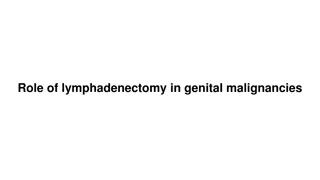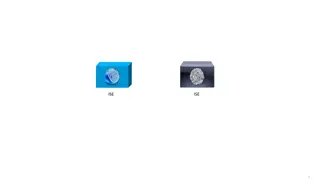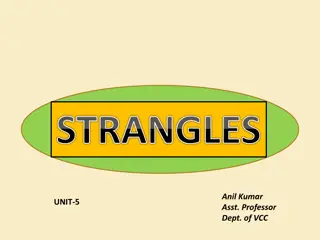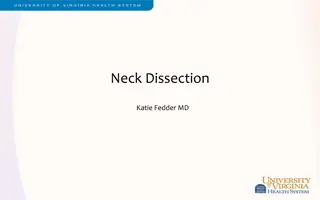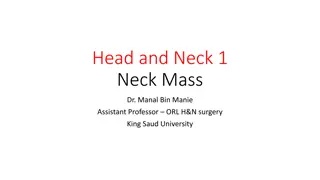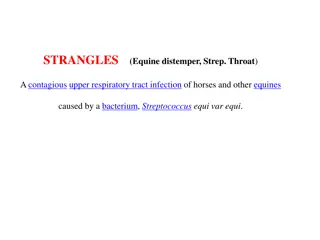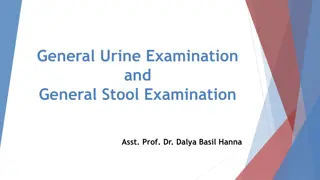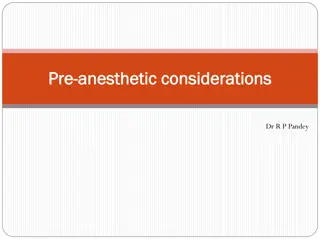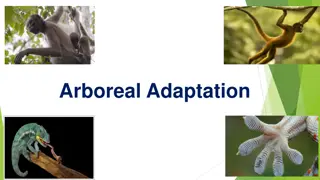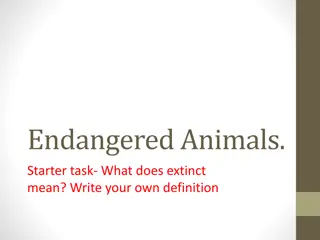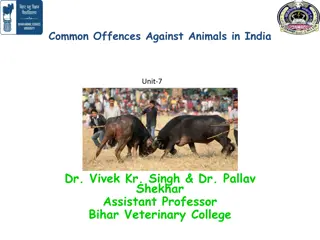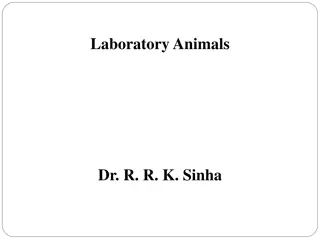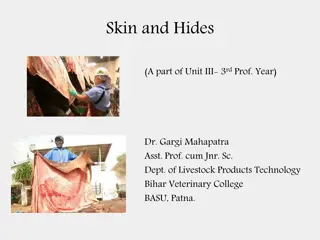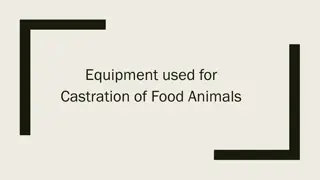Understanding Lymph Node Examination in Food Animals
The lymphatic system plays a crucial role in maintaining the body's health by supplying oxygen and nutrients to tissues and removing waste products. Lymph nodes are round masses of lymphoid tissue found along lymphatic vessels, containing lymphocytes within a capsule of connective tissue. Characteristics such as color, consistency, and size of lymph nodes vary among different animals. Various diseases can affect different parts of the body, leading to conditions like pleurisy, pneumonia, and tuberculosis in the lungs, or stomatitis and rinderpest in the head area.
Download Presentation

Please find below an Image/Link to download the presentation.
The content on the website is provided AS IS for your information and personal use only. It may not be sold, licensed, or shared on other websites without obtaining consent from the author. Download presentation by click this link. If you encounter any issues during the download, it is possible that the publisher has removed the file from their server.
E N D
Presentation Transcript
Lymph nodes examination of food animals
The Lymphatic System Lymph is a medium: Supply oxygen & nutritive matter are transferred from the blood to the body tissues The means by which waste products from these tissues are removed The presence of lymph around the tissue cells is maintained by a slow exudation of this fluid throughthe capillary walls & in to the surroundingtissue Afferent lymphatics:Vessels conveying lymph to a lymph node Efferent lymphatics: Discharge eventually in to larger lymph collecting vessels, the direction of the lymph flow in every case being towards the heart Largest lymph collecting vessel is the thoracic duct Lymph from posterior part of the body: lumbar & intestinal to thoracic duct & open in to the anteriorvenacava Lymph from anteriorpart of the body: To tracheal lymph & towards jugular vein
Lymph node: Introduction Round masses of lymphoid tissue Surrounded by a capsule of connective tissue Found along the course of lymphatics Consists of a reticulum of connective tissue fibers in the meshes of which are contained numerous small rounded cells-the lymphocytes
Lymph node: Introduction The color of lymph nodes is variable: (white to greyish blue or almost black) In ox: mesenteric LN of ox black in color In Pigs: LN are lobulated & almost white (exception: LN of head and neck which are reddish in color) Consistency of LN: consistency is firm rather than soft Generally oval in shape & somewhat compressed Size: varies from pin head size to 10-20 cm or even more In the horses:LN are small & grape like clusters Larger in young animals than in the adults
Parts/Organ Lymph node Disease condition Head Parotid, retropharyngeal Bronchial, Mediastinal submaxillary, FMD, stomatitis, rinderpest, actinomycosis, actinobacillosis, cysticercosis Lungs Pleurisy, pneumonia, tuberculosis Heart Mediastinal Traumatic/tubercular, epicardium and endocardium, cysticercosis, hydatidosis, flabbiness of heart Fatty changes, actinobacillosis, abscess, cirrhosis, hydatid cysts, fascioliasis pericarditis, peticheal haemorrhages on the Liver Portal & hepatic Oesophagus, stomach, intestine Kidney Gastric & mesenteric The serous surface for tuberculosis, actinobacillosis, penetration by any foreign body Renal Spleen Uterus Udder Testes Carcass Splenic Iliac & renal Supramammary Superficial inguinal Prescapular, popliteal, renal, cervical, xyphoid or sternal auxillary, prepectoral, internal iliac Tuberculosis, anthrax, infracts, haemorrhages, septic metritis, evidence of recent parturition or pregnancy Abscess,septic metritis, tuberculosis Orchitis Bruises, injuries, abdominal & thoracic cavities for tuberculosis, poorness, emaciation & state of nutrition intercostal, external,
Haemallymph node Deep red or almost black in color Oval in shape Pea size Absent afferent and efferent lymphatics Accessory spleen: RBCs disintegration Numerous in Sheep and OX Absent in: Horse & Pigs Cattle: along the course of aorta and Subcutaneous fat Sheep: Beneath the peritoneum in sub-lumbar region Being larger and more numerous in animals suffering from anemia &cachectic conditions Lymph nodes absent in poultry
Lungs Lymph nodes Bronchial (tracheobronchial) and mediastinal: Incise Lung inspection - Bronchial left (No. 1) and right (No. 2) and mediastinal (No. 3) lymph nodes are viewed and incised Manual on meat inspection for developing countries http://www.fao.org
Liver View and palpate entire surface(both sides) View the gall bladder. For cattle over 6 weeks of age, incise as deemed appropriate to Open large bile ducts detect liver flukes. For sheep, pigs and game, incise as deemed appropriate for parasite Lymph nodes Portal (hepatic) Liver inspection - Incised portal (hepatic) lymph nodes (No. 1) and opened large bile duct (No. 2). Manual on meat inspection for developing countries http://www.fao.org
Rumen, reticulum, omasum and abomasum Viewing and incision of the mesenteric lymph nodes. In this case an incision was performed to demonstrate the mesenteric lymph nodes chain. Manual on meat inspection for developing countries http://www.fao.org


